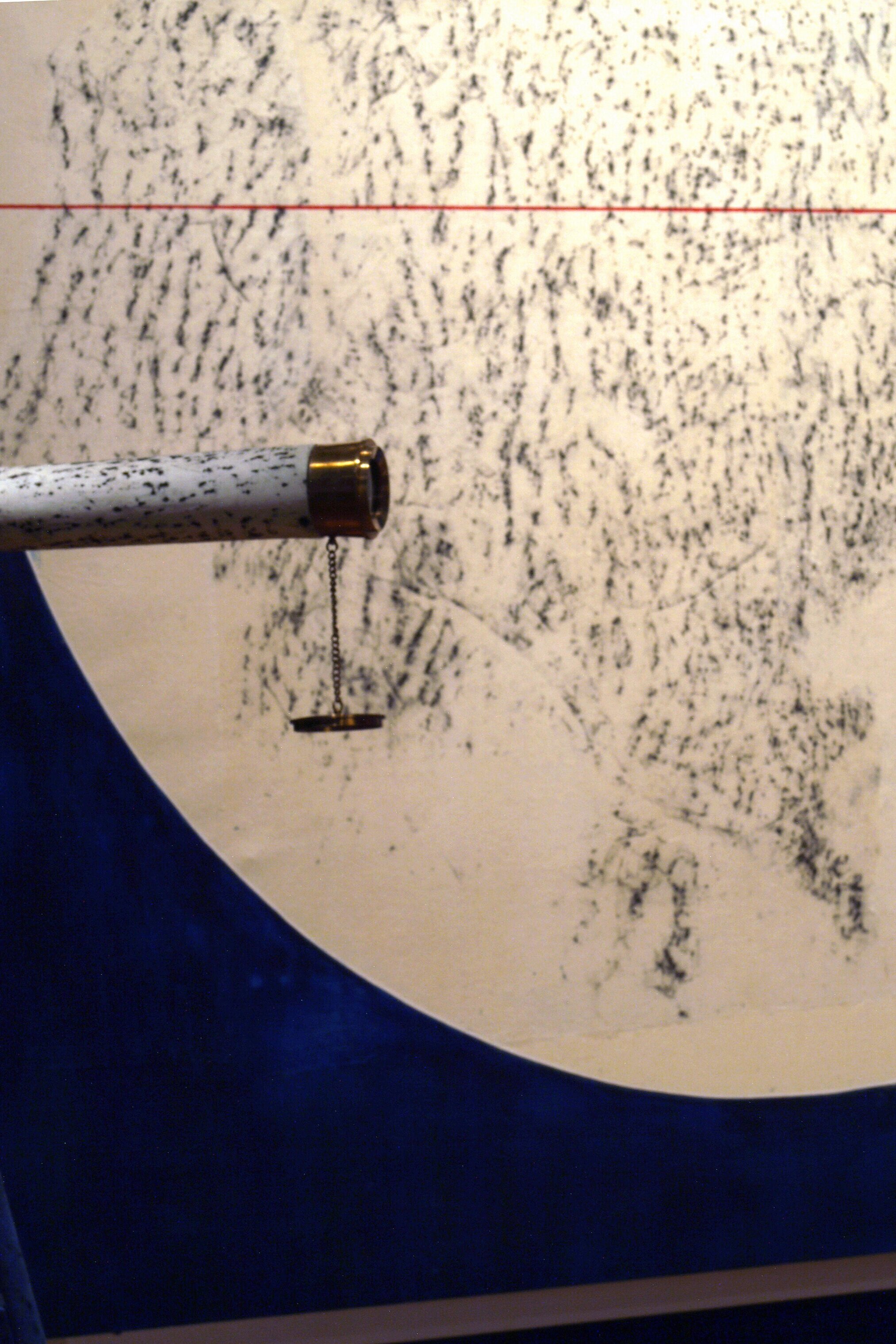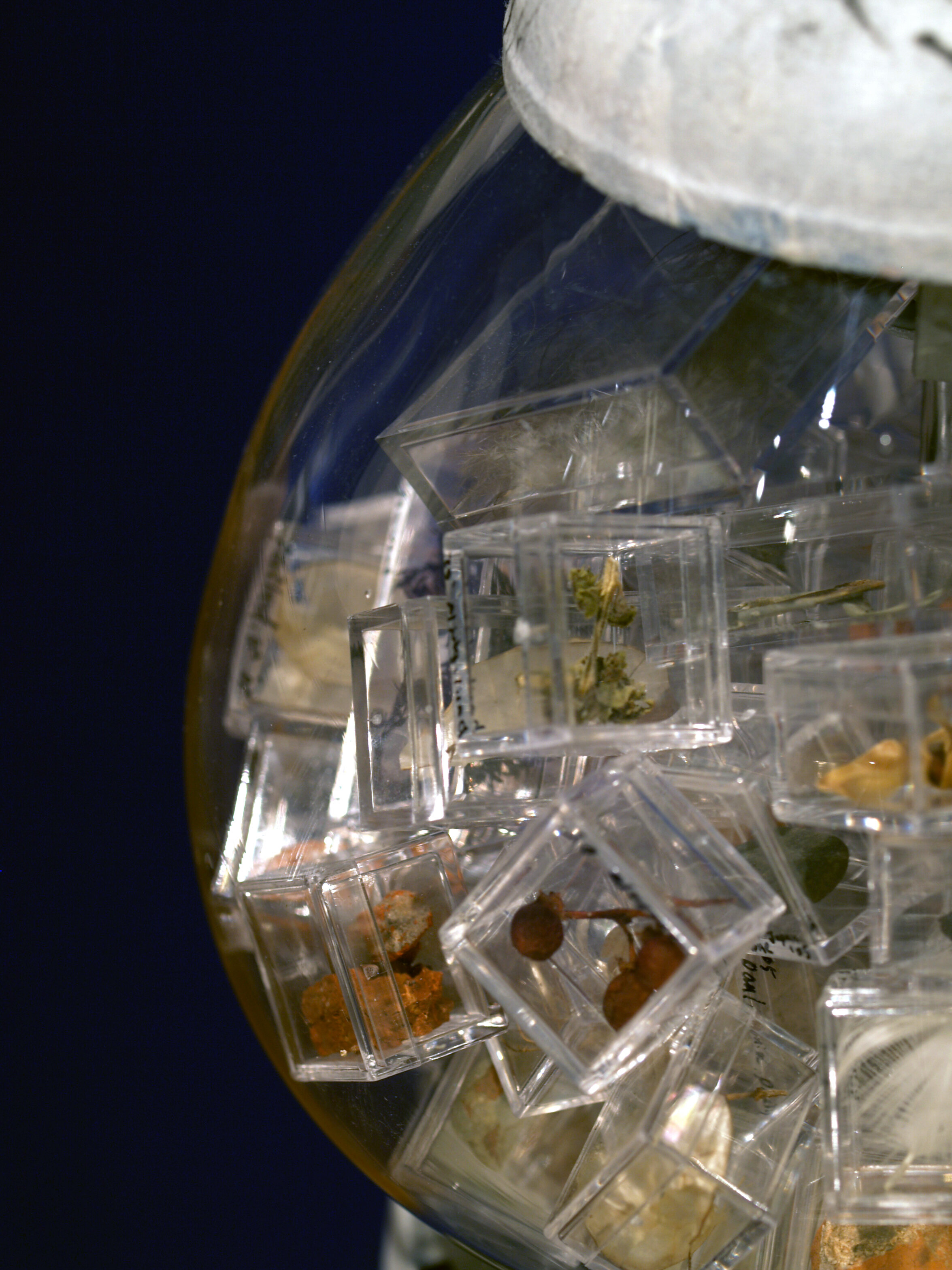
COSMOS
By Miriam Seidel
In Keiko Miyamori’s installation, Cosmos, it is as if we have entered a child’s room: bed, desk, and piano conspire with the gallery’s ornate wainscoting, moldings and curved windows to bring us inside this imagined space. But the artist beckons further. The walls seem to fall away to reveal the night sky on all sides.
We are invited to enter a dream of earth and stars, the music of the spheres played on a child’s piano.
Cosmos from exhibition Contemplative Spaces 2007 Assorted enveloped Objects, Washi, Charcoal, Resin
Cosmos Book Collection 2007 Various Conceptual Books, Washi, Charcoal 54 x 10 x 12 in.
White paper, blanketing the objects and the windows, holds the marks of rubbings Miyamori has made from the bark of trees. The all-over markings unify the space, recalling Yayoi Kusama’s covering of objects with obsessive dotted patterns. For Miyamori, they also create a kind of grounding connection with the impassive yet healing energy of trees. For earlier works, she has reclaimed massive tree trunks with root systems intact: the acrylic cube encasing an old typewriter here stands in for much larger, related pieces, where the dead tree has been transmuted inside a dustless, crystalline world.
The trees’ imprints on the white paper are like memories preserved. Masao Okabe, who represented Japan in the 52nd Venice Biennale (2007), has used frottage to similar effect in his long-term project, creating rubbings from the paving stones in the old Hiroshima train station, now demolished. The ghostly presence of the rubbings also echoes the white-face used in the radical performance style of Butoh, which emerged after World War II, in response to the unthinkable experiences in Hiroshima and elsewhere.
Miyamori, too, creates her work in the context of the unthinkable: the experiments done by Japanese soldiers on Chinese prisoners at Unit 731, a Chinese internment camp she has visited, and which changed the course of her art making. Here, the trees become a touchstone of safety and healing, allowing the imagined child to travel outward into the cosmos.
- Miriam Seidel
Cosmos Map #1 2007 Charcoal, Acrylic, Washi on Canvas 90 x 84 in.
Installation View of Cosmos at Gershman Y Galleries, Philadelphia, 2007
Bird Cage 2000 Bird Cage, Washi, Charcoal 9 x 11 x 15 ½ in.
Gumball Machine 2007 Gumball Machine, Washi, Charcoal 9 (dia) x 14 ½ in.





